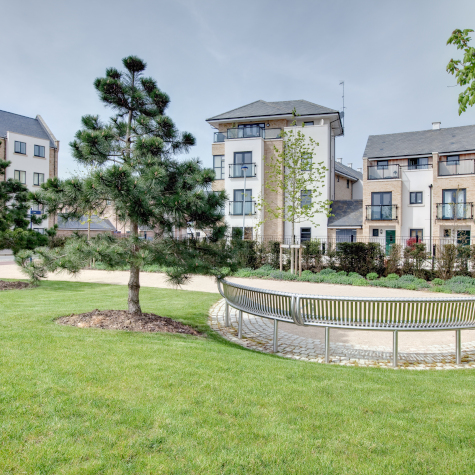Feeling safe where we live is extremely important. After all, no-one wants to worry about their own safety, or that of their children, friends or loved one, when they are out in their local neighbourhood. However, creating communities that promote feelings of safety and inclusion is something that has to be considered from the very inception of a development, involving everyone from architects and planners, through to the developers and possibly even the communities themselves.
As our communities grow and become more diverse, it is becoming increasingly important for the needs of different age groups, cultures and genders to be taken into account, as well as the needs of those who have either physical disabilities or face mental health challenges.
Involving the right people
Historically, the planning and architectural professions have been very male-dominated, and in the case of the UK, probably by those of a white British background. This has meant that the needs of other genders and ethnicities have not been considered as carefully as they could have been, resulting in built environments where residents either feel less safe or experience difficulties in getting around.
As awareness of differing needs becomes more prevalent, and diversity within the profession increases, greater care and attention is being given to this need for safe and inclusive neighbourhoods. While it is a complex issue, a few key areas have been identified and taken on board in the 2021 National Design Guide published by the Ministry of Housing Communities and Local Government.
Public Open Spaces
One key area that has been identified as an aid to feeling safe is for planned developments to contain central open spaces, which surrounding houses face onto. Having properties with frontages on the open space increases the sense of security, as it provides a feeling that the space is being overlooked by people inside.
Ensuring the public space is well lit and contains sufficient points of entry can also enhance the sense of security, as it gives residents multiple exit routes, should they feel threatened. Additionally, taking different forms of transport into account, and actively encouraging walking or cycling, can offer a greater feeling of inclusivity, especially for residents and visitors who experience mobility difficulties, such as wheelchair users or the elderly.
Well-designed open spaces will include both natural elements, such as trees or water features, as well as a reason to enter the space in the first place, such as an activity or destination, for example a play area for children or other social meeting point.
Community centric resources
When considering inclusive design, other elements that should be considered are local resources that benefit and promote community. Whether that is a nursery, community centre, health, or religious and cultural facilities, these can all aid the sense of belonging and promote social interaction.
In addition, allowing for a mix of home tenures, types and sizes, all designed with inclusivity, accessibility and social integration in mind, can help contribute to the creation of a mixed and balanced neighbourhood. Of course, sustainability should not be forgotten, ensuring all properties are built to be as energy efficient as possible, seeking to maximise renewal energy sources, energy efficient systems and making use of suitable construction materials and techniques.
Is change coming?
With so many areas to consider, change within the development process may be slow in coming, but evidence suggests that steps are being made across the globe, with ever increasing attention being given to the needs of the more vulnerable members of our society.
That being said, there is a long way to go here in the UK, especially in London. Regrettably, many developments focus more on providing as many properties as possible, without the necessary accompanying community resources. So, while we see large blocks of flats being erected, these are not matched with the provision of new schools, GP surgeries and other resources which enhance and encourage community.
Where developments of residential flats do provide internal community resources, for example an on-site gym, this often results in smaller flats. This both limits the amount of time that can comfortably be spent at home, while also restricting the opportunity for the flats themselves to be designed as more inclusive, taking the needs of residents who may have disabilities into account.
While the apparent lack of consideration for more community-centric and inclusive design may often be due to an absence of available space within the development, we look forward to seeing whether developers in the UK seek to change the current trend and instead strive to provide more spaces where people feel safer and more included.

